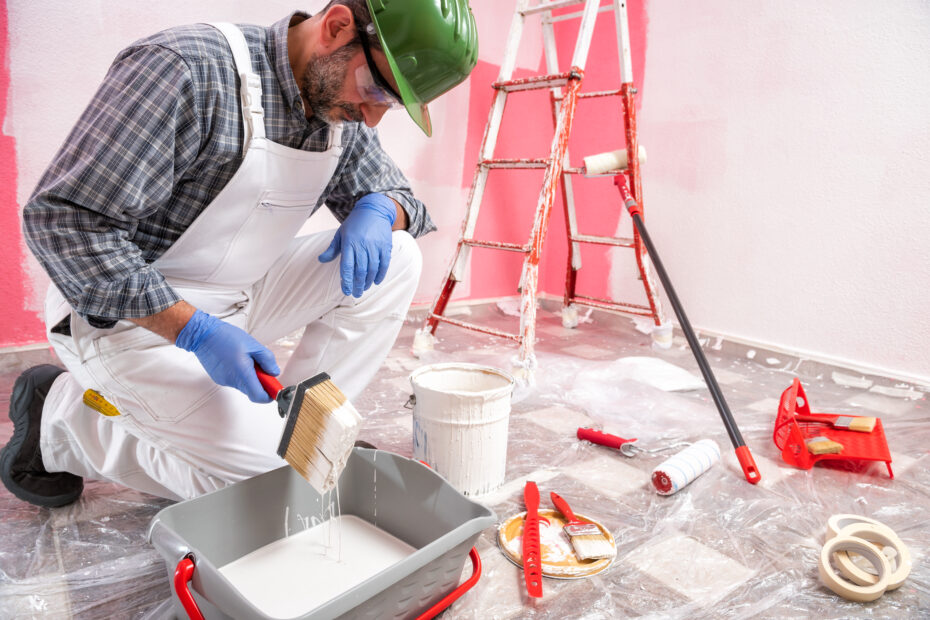No matter if those white walls are too dull, or you have chips and cracks, your walls need to get a new coat of paint sometimes.
It’s pricey, though. You can see why many people would be interested in the DIY route. The bulk of this amount is paid by the painter. You can make house painting much cheaper by removing the labor cost.
Glossier colors tend to be more expensive that matte ones. One gallon of paint will cover 350-400 square feet. Two coats are likely. You’ll need paint, painters tape and tarps.
But how do you accomplish the task like a pro? Other than the obvious tips such as covering furniture and not painting yourself in the corner, there are secrets that can improve your work. These five tips, tricks, techniques and tricks will guarantee that you can paint a professional looking job.
1. Wait for the right conditions
It doesn’t make sense to paint when it is rainy or the weather forecast calls for rain. Between 40-50 percent humidity is ideal for painting. A high humidity level can cause streaking in paint and other problems. Paint that is exposed to cold and humid conditions may become condensation.
It is not good to dry the paint in a hot day. It is possible for the paint to dry too quickly and develop cracks. Acrylic and latex paints may not perform well in a house with a temperature above 85 degrees. Oil paintings will be affected if the temperature rises to 90 degrees.
2. Select the right roller nap
Nap refers the length of your paint roller’s fibers. Different surfaces require different naps. You should take a short nap if your walls have very little texture. Interior walls will have some texturing so a 3/8-inch nap would be a good choice. You can choose a 1/2-inch or 3/4 inch nap for brick and other textured surfaces.
You should avoid using 1-inch napping for interior painting. This is because these rollers are typically reserved for exterior stucco.
3. Before you begin, mix your paint
Did you realize that even when mixing the same color, a paint machine can produce slight variations. Before you start mixing the paint, it is a good idea to mix them together.
Use a 5-gallon paint bucket to combine all your individual gallon containers. To create one consistent color, stir with a paint stick. You can always put any paint leftovers into a 1-gallon tin.
4. Consider self-priming painting
Primer is often preferred by contractors to be used before applying paint. Primer serves two purposes. It seals the surface of a wall and provides better adhesion to the paint color. This is similar to how foundation “preps” your face before you apply makeup.
A self-priming paint is enough for most DIY painters. As it applies color, self-priming paint seals the wall. The removal of primer can help save you time and money. You may not need a primer if your job is to paint over existing paint.
5. Work with a damp edge
Once you have started rolling, be sure to follow a consistent technique. Every stroke should be overlapped with the previous. Move your roller slowly, starting in one corner. Your roller should be refilled frequently so that it can absorb more paint. Reapply paint as often as you need, such a streak, bubble, or noticeably thin area.
One last tip: Allow your roller to do its job and don’t press too hard on the wall.
The last word on painting like an artist
It doesn’t matter if you’re looking to paint the entire house or just one room, it can be very cost-effective to learn how to paint. There are no excuses for not getting a great result if you choose the right paint and prepare your space correctly (liberally use fabric drop cloths and blue tape to protect edges).
